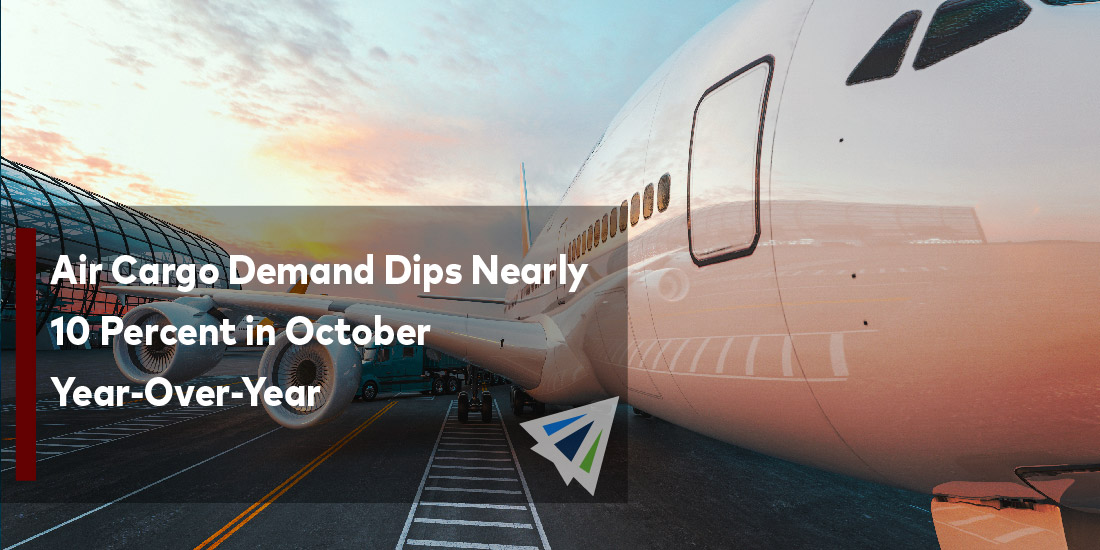Air Cargo Demand Dips Nearly 10 Percent in October Year-Over-Year
Shipping activity has remained relatively unpredictable, and market conditions are changing rapidly and often in surprising ways. As anyone who deals in international shipping is aware, the last couple of years have been brutal on international ocean shipments. Global ports have suffered strict regulations and shutdowns, empty container shortages hit all-time highs, equipment became less available, congestion increased, and as a result of all of this – carriers hiked their rates insanely high.
In response, the market trended towards air shipping as a reasonable alternative. As passenger air travel became more common, there was more capacity to accommodate shipper needs and rates remained reasonable.
However, recently we are seeing a trend downward in air cargo activity.
Air Cargo Demand Dips: Supply and Demand Disparity
Industry experts claim that demand and rates are both falling at a time where they usually rise. Being in the early days of November, we are well into air freight peak season, and demand has remained relatively stable and controlled throughout all of October through now.
In September of this year, air cargo volumes had already dropped by roughly 5 percent year-over-year according to a specific formula that calculates combined weight and shipment dimensions. However, the International Air Transport Association just released its own report Monday that showed September cargo had actually dropped by 10.6 percent year-over-year. While the results of these two analytics differ due to different calculation methodologies, the net impact remains the same – air cargo demand is down significantly year-over-year, and the disparity has continued to increase through October and likely will through the rest of the year.
Air freight is actually significantly less profitable this year for airlines due to the combination of the aforementioned factors – shipper demand has decreased at the same time that passenger air travel has increased. This means there is more available capacity than usual combined with less air cargo activity, resulting in planes that are less full and an overall less-profitable year.
The one primary benefit to these market conditions are that carriers have dropped rates to help with the disparity between supply and demand. While certain struggles within the air shipping industry still remain such as labor shortages and capacity issues, the present is seeming like a prime opportunity for shippers to take advantage of the low rates.
Capitalizing on Market Conditions
While the future of air freight rates, capacity, availability, and market conditions is still up in the air, the current volatility should encourage shippers to consult their freight forwarders and other industry experts about how they can adjust their logistics process to save more money and get access to more efficient and reliable routes.
If you have any questions about air freight rates, availability, and how the global shipping landscape is changing in the height of peak season this year, please don’t hesitate to reach out to one of our team members! We’d love to answer any questions you and your team may have.
